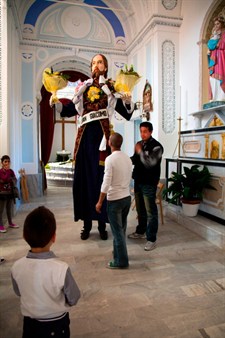The Giants from the eighteenth to the twenty-first century
 Scholars have traced the history of giants in Europe since the early modern period to the present day. They identify the Renaissance as the apogee of their spread and the eighteenth century as a period of decline for them, culminating in some state and ecclesiastical measures issued against their use (not just during the French Revolution, but also by rulers such as Charles III of Spain and the Austrian Emperor Joseph II). The nineteenth century, however, it is considered the second “renaissance” of the giants: the festive giants were interpreted as symbols of the ancestral heritage and popular culture of Nations. Nowadays there is a veritable obsession with giants linked to the cult of local identities. This accounts for the proliferation of so-called “town-giants” or “géants-miroirs”, puppets which impersonate socio-economic figures and even inanimate symbols of cities and small communities in Europe. In this sense, the twentieth century was the century of “the gigantification”, i.e the transformation of normal into gigantic figures (in the past, in most cases, the dummy was nothing more than the proportional representation of a superhuman being).
Scholars have traced the history of giants in Europe since the early modern period to the present day. They identify the Renaissance as the apogee of their spread and the eighteenth century as a period of decline for them, culminating in some state and ecclesiastical measures issued against their use (not just during the French Revolution, but also by rulers such as Charles III of Spain and the Austrian Emperor Joseph II). The nineteenth century, however, it is considered the second “renaissance” of the giants: the festive giants were interpreted as symbols of the ancestral heritage and popular culture of Nations. Nowadays there is a veritable obsession with giants linked to the cult of local identities. This accounts for the proliferation of so-called “town-giants” or “géants-miroirs”, puppets which impersonate socio-economic figures and even inanimate symbols of cities and small communities in Europe. In this sense, the twentieth century was the century of “the gigantification”, i.e the transformation of normal into gigantic figures (in the past, in most cases, the dummy was nothing more than the proportional representation of a superhuman being).
